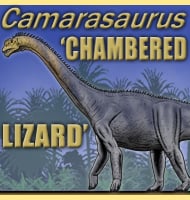In Depth
Lagerpeton is a very primitive dinosauromorph that lived in South America during the early Triassic. So primitive is Lagerpeton that it is easily among the most basal dinosauromorphs that we currently know about. Several features can be observed in the known Lagerpeton material including neural spins on the dorsal vertebrae that are slanting slightly forwards, a common feature seen in animals that spend a lot of time actually hopping about. The foot bones are also structured in such a way to aid a hopping movement.
Lagerpeton was very small and lightly built, almost certainly relying upon its senses as well as quick reflexes and speed and agility to stay out of the jaws of predators such as rauisuchians.
Further Reading
- The Cha�ares (Argentina) Triassic reptile fauna. X. Two new but incompletely known long-limbed pseudosuchians. - Breviora 378:1-10. - Alfred S. Romer - 1971. – New materials and reinterpretation of Lagerpeton chanarensis Romer (Thecodontia, Lagerpetonidae nov.) from the Middle Triassic of La Rioja, Argentina. – Ameghiniana. 23 (3–4): 233–242. – Andrea Arcucci – 1986. - Morphofunctional evolution of the pelvic girdle and hindlimb of Dinosauromorpha on the lineage to Sauropoda. - R. Fechner - 2009.









